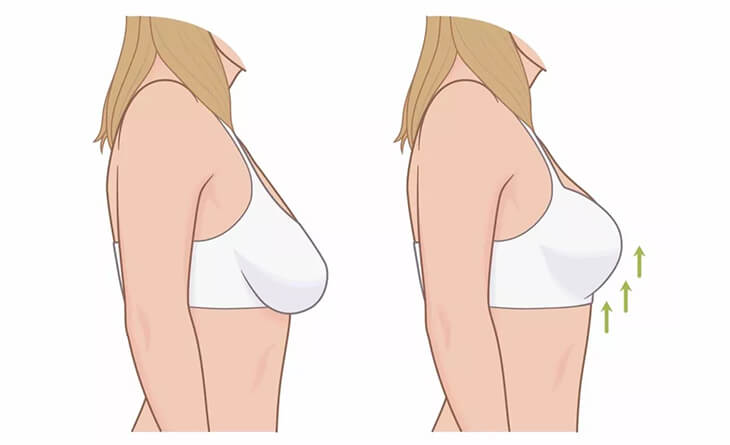Breastfeeding After a Breast Reduction – A Complete Guide
Breast reduction surgery can be life-changing for many women, providing physical relief and boosting self-confidence. However, for those planning to have children in the future, a common concern is whether breastfeeding after breast reduction is possible. Let’s delve into how breast reduction surgery affects breastfeeding and what you need to know to make an informed decision.
What is a Breast Reduction Surgery?
Breast reduction surgery, medically called reduction mammoplasty, is a procedure that removes extra breast tissue, fat, and skin and get a breast size more proportionate to the body. This surgery can help women to remove discomforts like back pain, neck pain, and skin irritation caused by overly large breasts. The goal is not only aesthetic improvement but also enhanced physical well-being.
The surgery begins with the incsions in a keyhole or anchor shape, typically around the areola and down the breast. Extra skin tissue is removed, and the remaining breast tissue is reshaped and lifted. The nipples and areolas are often repositioned to a higher, more natural location on the breasts. The entire procedure usually takes about two to five hours, depending on the complexity and amount of tissue to be removed.

How is it Done?
The surgical technique used in breast reduction surgery plays a crucial role in the ability to breastfeed afterward. Surgeons strive to preserve the milk ducts and nerves essential for breastfeeding. A common method is the inferior pedicle technique, where the nipple-areola complex remains attached to the underlying breast tissue. This helps maintain the connection between the milk ducts and the nipple, increasing the chances of successful breastfeeding after breast reduction surgery.
Another approach is the central pedicle technique, which aims to preserve the milk ducts. Additionally, the surgeon may use liposuction to remove excess fat, which can be less invasive and preserve more milk-producing tissues. The choice of technique depends on the individual’s anatomy and the surgeon’s expertise. Discussing these options with your surgeon can help you understand how they will approach your surgery with breastfeeding in mind.
Differences Between Breastfeeding Before and After Breast Reduction
Breastfeeding after breast reduction surgery can be different, but many women are still able to breastfeed successfully. Here are some key points to consider:
Milk Supply: While some women may experience a reduced milk supply, others can breastfeed exclusively. Techniques that preserve more breast tissue and ducts increase the likelihood of maintaining an adequate milk supply. Monitoring your baby’s weight and growth is essential to ensure they are getting enough milk.
Nipple Sensation: Sensation in the nipples is essential for the hormonal responses that trigger milk production and letdown. Most modern surgical techniques aim to preserve nipple sensation, though it might be temporarily reduced post-surgery. Nipple sensation can gradually improve over time, enhancing breastfeeding success.
Support and Guidance: Working with a lactation consultant can provide valuable support and strategies to enhance breastfeeding success. If needed, they can guide you on positioning, latch techniques, and supplemental feeding. Many women find that they can overcome initial challenges and successfully breastfeed their babies with the right support.
Considerations for Women Planning More Children After Surgery
If you plan to have more children and are considering breast reduction surgery, it’s important to choose a surgeon experienced in techniques that optimize breastfeeding outcomes. Here are some considerations:
Consultation: Discuss your plans with your surgeon during the consultation. Ensure they understand your desire to breastfeed and ask about their experience with patients who have breastfed after surgery. A surgeon with experience in preserving breastfeeding capability will be able to provide better guidance.
Surgical Technique: Inquire about their techniques to preserve milk ducts and nerve pathways. Techniques like the inferior or central pedicle, which aim to keep the milk ducts intact, can be more favourable for future breastfeeding.
Recovery Time: Plan your surgery with enough recovery time before you start trying to conceive. This allows your body to heal completely and adapt to the changes. Generally, it’s advisable to wait at least six months to a year after surgery before becoming pregnant to ensure optimal healing and stability of the breast tissue.
Confidence and Comfort that Comes After Breast Reduction
Beyond the technical aspects, breast reduction surgery can significantly impact a woman’s confidence and comfort. Many women report relief from chronic pain, improved posture, and the ability to participate in previously avoided activities. These improvements contribute to overall well-being, making breastfeeding challenges more manageable.
The psychological benefits of feeling more comfortable and confident in your body can also be profound. Women often feel renewed self-esteem and are more inclined to engage in social and physical activities without the burden of discomfort or self-consciousness.

Take the First Step
Breast reduction surgery can provide profound physical and emotional benefits, and breastfeeding afterward is often possible with the right surgical approach and support. If you’re considering breast reduction surgery and are concerned about future breastfeeding, it’s essential to consult with a skilled surgeon who prioritizes techniques that preserve breastfeeding potential.
Dr. Lokesh Handa, a board-certified and experienced plastic surgeon at Med Esthetiks in New Delhi, specializes in breast reduction surgery for those seeking expert care. Dr. Handa’s commitment to personalized care and advanced surgical techniques ensures the best possible outcomes for breastfeeding after breast reduction surgery. Schedule a consultation with Dr. Handa to explore how breast reduction surgery can enhance your quality of life while considering your future family plans.

Dr. Lokesh Handa
M.S, M.Ch
Sr Consultant Plastic, Aesthetic and
Hair Transplant Surgeon
Dr. Lokesh Handa, a board-certified plastic surgeon with over 15 years of experience, holds esteemed titles of M.S. and M.Ch. He serves as a Senior Consultant in Plastic, Aesthetic, and Hair Transplant Surgery.
As the Director of Med Esthetiks, his commitment to excellence is evident. Dr. Lokesh Handa is a distinguished member of renowned organizations, including ISAPS (International Society of Aesthetic Plastic Surgeons), APSI (Association of Plastic Surgeons of India), and IAAPS (Indian Association of Aesthetic Plastic Surgeons). With extensive expertise, he blends precision and artistry, offering unparalleled care in the realm of plastic surgery and contributing significantly to the advancement of aesthetic practices.
To book an appointment, call: +91-8800203431 or email: care@medesthetiks.com











